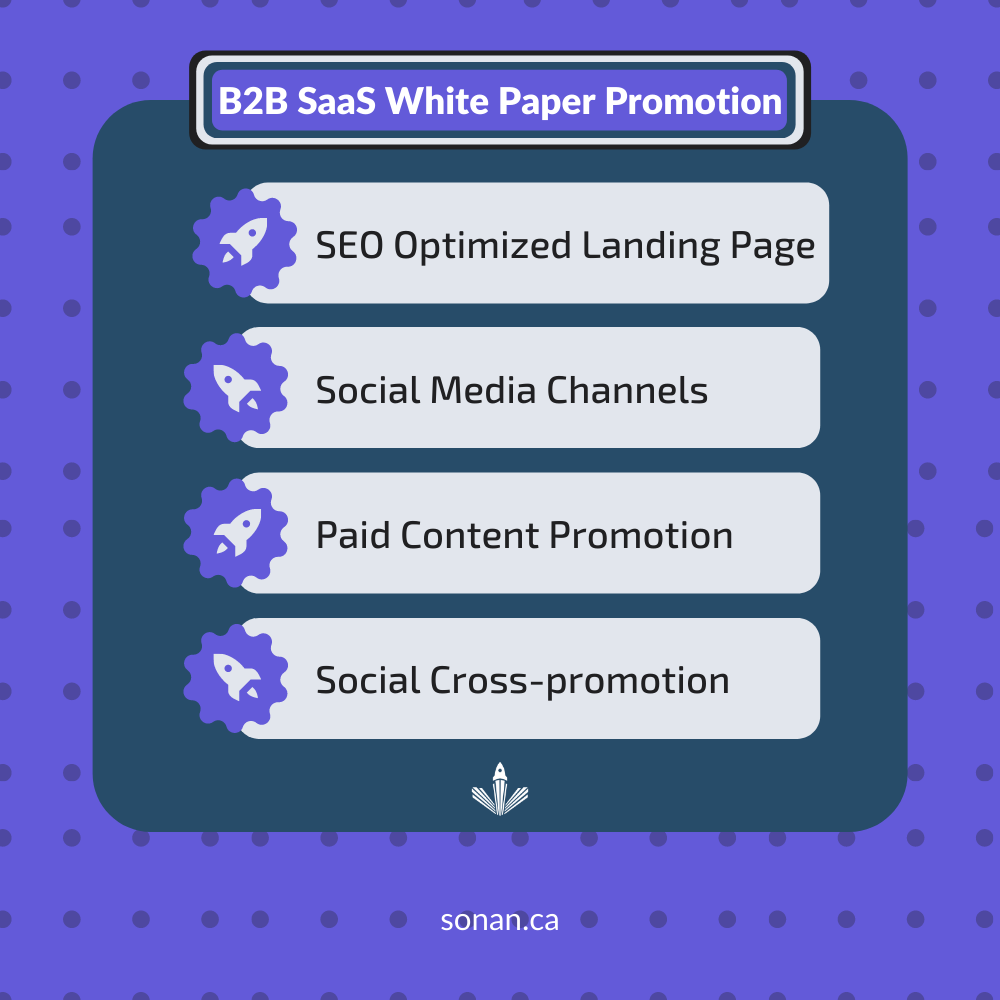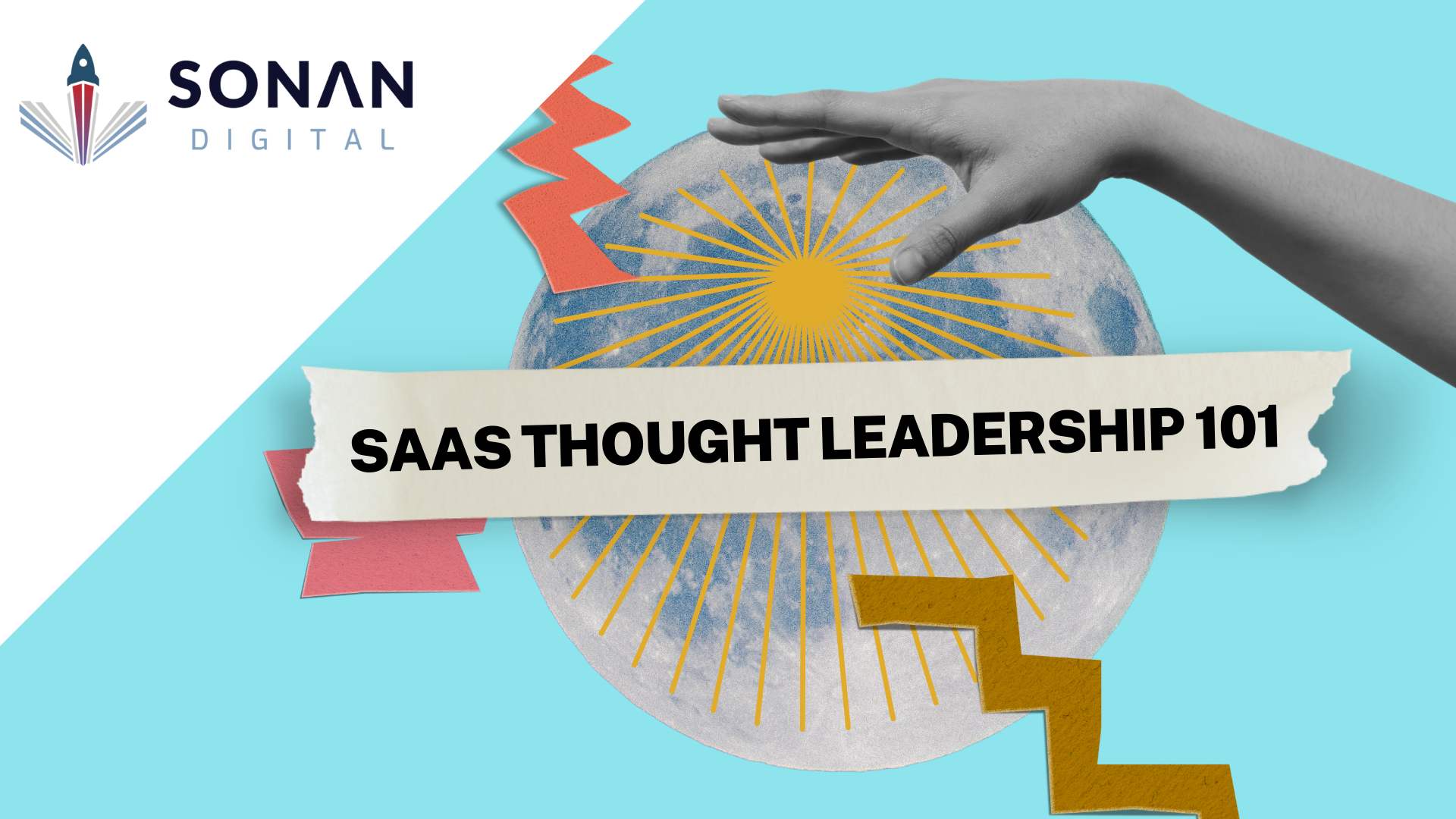When it comes down to presenting an innovative B2B product or service, there are few better options than the creation of a B2B Marketing White Paper. The right piece can prove that you understand your prospects’ needs on a deep level and have carefully crafted a solution that’s a perfect fit for them. This piece aims to serve as an introduction to the concept, provide a framework to help you create a white paper, and provide useful resources and examples. If you find this piece helpful, be sure to grab our free B2B Marketing White Paper Template.
What is a B2B Marketing White Paper?
According to Investopedia, “A white paper, also written as “whitepaper”, is an informational document usually issued by a company or not-for-profit organization to promote or highlight the features of a solution, product, or service that it offers or plans to offer.”
In the context of B2B marketing, they serve as an effective tool to promote your analysis of a problem and proposed solution. If you are familiar with academic articles used in research and universities, white papers serve a similar purpose. They are typically well-researched pieces, filled with data and expert interviews, aimed to go deep on a topic and provide a compelling solution.
They are typically well suited when targeting senior decision-makers at a company. These executives have limited amounts of time and are typically already problem aware. As a result, white papers are idea for middle-of-funnel and bottom-of-funnel engagement. Beyond this, if your product or services champion is a middle manager and the ultimate decision will include a more senior buying committee, white papers can serve as an effective piece for them to distribute on your behalf.
How Can White Papers be Used in B2B Marketing?
Ultimately, B2B marketers can use white papers in many different ways in their B2B content marketing campaigns. In many industries, potential customers are hungry for information. Your content marketing efforts should be suited to providing them with the information they need to make a decision. According to the Content Marketing Institute, white papers and eBooks are one of the top four most effective content marketing formats in B2B.

From the perspective of buyers, they also report white papers as being beneficial in their decision-making process. According to the Demand Gen Report, 71% of buyers report that white papers have helped them in the decision-making process.
Building Brand Authority
People buy from brands that they know, like, and trust. While social media posts and blog posts can be effective in creating awareness, they often don’t build a deep relationship. Longer form pieces such as eBooks, webinars, and white papers can significantly impact the trust part of the equation. By getting a sense of your deepest thoughts, research, and solutions, the decision-making process becomes significantly easier.
Improving Lead Generation
B2B prospects are happy to trade their contact information for unique insights and research. Through the use of a white paper landing page, you can collect the email address of interested individuals. This will not only identify the company in your account-based marketing efforts, but also allow you to communicate further. As a content marketer, each white paper can serve as a valuable marketing tool to generate demand.
White Papers in the Sales Process
As mentioned previously, white papers can be effective later in the sales cycle. Beyond simple sales pitches, your sales team can share your marketing materials with prospects. As the sales process is typically lengthy, having the right pieces empowers sales reps.
The differences between eBooks, white papers, and case studies
In North America, these three forms of content have been used extensively in B2B marketing for decades.
Case studies are typically the shortest of the three. They focus on the results that your company has generated for a specific customer. Readers typically enjoy the story-telling aspects of these pieces as they are able to understand clearly who these results were generated for. White papers in comparison, are more general in their approach, speaking about the problems that similar firms face in general.
eBooks on the other hand are typically longer than both case studies and white papers. They typically provide a broad collection of information on a topic, such as our eBook, The Founder’s Guide to B2B SaaS Content Marketing. Compared to white papers, eBooks are great at educating prospects at the top of the funnel. Individuals that are just starting research on a topic need a great deal more of general information.
| Content Format | White Paper | Case Study | eBook |
|---|---|---|---|
| Length | Medium to Long | Short | Long |
| Topic | In-depth Information on a Specific Problem and Solution | Specific Information on a Use Case | General Information on a Specific Topic |
| Target Persona | Senior Decision Makers | Varies | Varies |
| Typical Buyers’ Journey Stage | Middle of Funnel | Bottom of Funnel | Top and Middle of Funnel |
Creating a B2B Marketing White Paper
Topic Selection
When it comes to topic selection, you want to be able to go deep on both the problem and your solution. What topics is your organization uniquely positioned to address? As with any part in the creative process, you’ll most likely want to identify 5-10 potential topics, then select the strongest ones from there.
As with any content writing, your sales team can be a great source of information for you to leverage. They are the ones speaking to prospects and customers on a daily basis and will have unique insights as to the problems that are common, pressing, and can be addressed. Beyond this, you can also host webinars with individuals in your existing audience and listen to their questions to see what common themes come up.
Before you solidify a topic, it’s also important to ensure that the topic or at least your angle on it is original. If you see plenty of existing pieces from other sources, you may want to select another idea or brainstorm what unique approach you can take on the topic.

Research
Extensive research is what makes a white paper truly stand out. As with any other academic or research-focused writing, you’ll want to perform a literature review to see what existing pieces have been produced. This will ensure that your piece is accurate and well-researched, while also providing you with insightful statistics to include in your work. Tools such as Google, Google Scholar, and Google Datasets will all be helpful at this stage.
Interviews
As another point, you’ll also want to interview subject matter experts to get their unique takes and insights. This can range from individuals that are currently experiencing the problem, to your internal product experts. The more time you take to properly research and interview individuals on a topic, the higher quality the piece will be.
Writing & Editing
After the first two stages, this is where it all comes together. You’ll want to take the time to craft an extensive outline or table of content for your piece. This will ensure you know the approximate structure of your final piece is well-thought-out. If you’re looking for guidance at this stage, be sure to check out our free B2B marketing white paper template.
With a solid structure, you’ll want to start crafting your drafts. Your readers expect white papers to be filled with useful facts and figures. The more you reference your research and interviews, the more credibility your final piece will ultimately have. Our suggestion is to focus on getting your main points laid out first and then revisiting the piece to polish. If there are other stakeholders involved, sending them drafts will be helpful in getting their input and feedback.
Design
Great layout and design for your whitepaper are also essential. If you handle the creation of the written content of your piece in-house, but lack a content or graphic designer, then relying on an agency such as Sonan Digital may make sense. You’ll want the reader to associate the white paper with your brand and be pleased—if not impressed.
Aspects such as tables, charts, and figures will require a certain amount of polish and clarity to ensure they are getting the point across. For some inspiration as to what well-designed pieces look like, check out the last section in this post.
Promoting Your White Paper
Now that your piece is published, get it in front of the right individuals. You can share it with existing subscribers on your email list ungated, or collect new emails with a landing page. Here are just a few examples of how to go about promoting your white paper:
- SEO (Search Engine Optimization): By targeting a specific keyword with your landing page, you’ll be able to get in front of searchers on search engines.
- Social Media: If you have existing social media pages on LinkedIn, Facebook, or Twitter, bringing attention to your piece through these channels may be valuable.
- Paid Content Promotion: Through channels such as LinkedIn, you can sponsor your content to appear in the feeds of your target buyers. This will be helpful in reaching senior executives, especially those who may not be actively searching for your brand or the topic.
- Cross-promotion with Interviewees and Influencers: If you interviewed any professionals on the topic and quoted them in the piece, you may want to invite them to share it amongst their networks.

Examples & Resources to Create Your White Paper
Here are some additional resources and examples to leverage when it comes to creating your white paper:
The Best White Paper Examples for B2B Marketers
Download The Free Sonan Digital White Paper Template
-1024x320.png)




